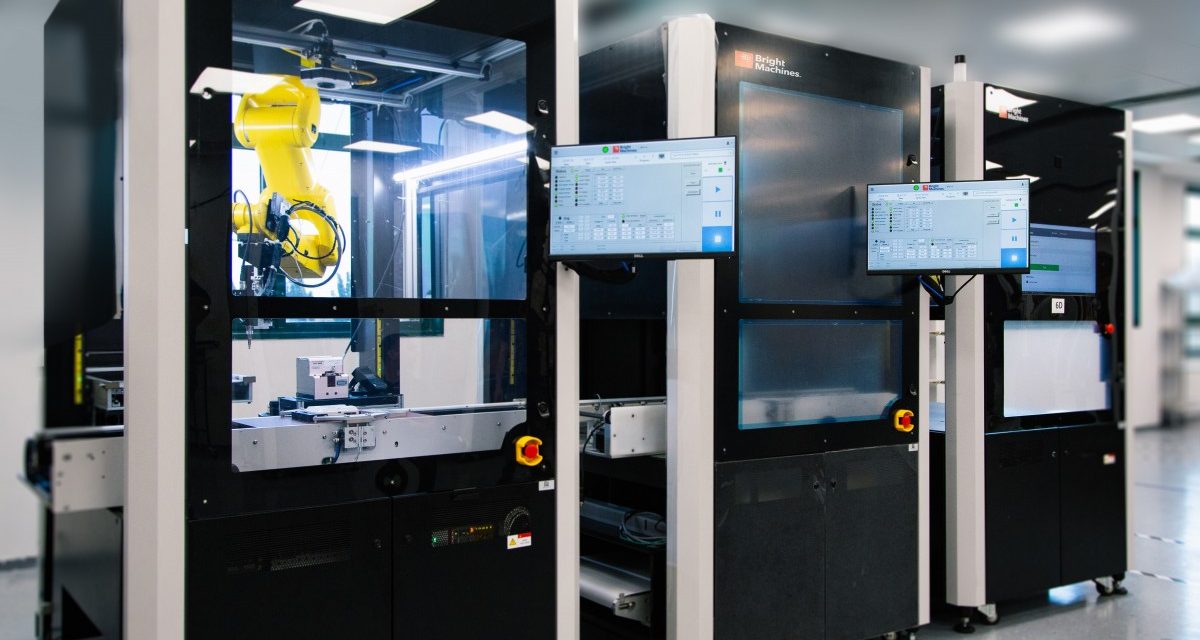Gaining Globalization’s Efficiencies Closer to Home

By Pat O’Malley, CFO, Bright Machines
Pat O’Malley spent 30 years at Seagate before moving away from the hardware realm. Last month he joined the Bright Machines team. Here he explains why.

This shift away from China – not pulling out entirely, but an accelerating shift nonetheless – has been a long time coming. Pre-dating the latest trade wars, many manufacturers sought alternatives to China due to an absence of the rule of law and an ensuing erosion of trust. The trade war and, now, Covid-19, have fanned these flames into today’s conflagration.
But let’s remember why manufacturers came to China in the first place. When I joined Seagate in the late 80’s, the wave of globalization was beginning to wash over the manufacturing industry. At that time, the storage leader didn’t even have a China facility.
That would soon change.
When your business model necessitates purchasing 60 billion parts in order to manufacture 60 million units, or, put another way, when you can sell a finished computer disc drive containing 52 rare-earth elements for $99 at Best Buy, you better have found some efficiencies and scale. That’s what globalization at its best provided – efficiencies and scale that drove down cost.
A Different Time, A Different Path to Productivity and Cost Savings
Fast forward to today – a manufacturing world badly shaken by Covid-19 and its impact on global supply chains – and I’m convinced that the important next chapter in manufacturing efficiency, productivity and cost is going to be written by intelligent software – and the machines, lines and, ultimately, the factories that software defines. In fact, that’s why I am delighted to share I have joined Bright Machines as CFO.
Global supply chains just weren’t built to handle the strain and the many unexpected behaviors and outcomes of a global pandemic, and I don’t see us going back. Instead, I think we’re about to experience an era of “regionalization,” where supply chains will be built around the markets they serve. China may still play a role in a manufacturer’s Asia-Pac strategy, for example, but region-specific supply chains will also be developed for North American and European markets.
That means manufacturing will be returning in force to the U.S. and other consumer-rich markets, which is great news. But the only way the nearshoring and onshoring of manufacturing can make economic sense, enabling the production of high-quality goods at price points consumers can afford, is through automation, and by that I mean intelligent automation.
Why Bright Machines
I was immediately taken by Bright Machines’ compelling vision for this next generation of automation – modular robots married to cloud-based software that creates not only a better machine for manufacturing goods but a system to continually improve and help manufacturers better understand their production and manufacturing lines.
But as a finance guy, I also know that the only way to reshore manufacturing is to make automation cost effective. We are doing that in two ways. First, our software-first approach is driving significant cost out of the automation process – from the deployment, configuration and management of automated assembly lines. Second, our customers deploy Bright Machines as a service, allowing them to avoid the high, up-front capital expenses that typically come with automation investments. Just like labor and other direct production costs today, automation costs can be treated as opex. And, we’re making it even easier for companies to future proof their lines now, as industry gets back to work with the Factory Resiliency Fund that we announced in May.
Ultimately, companies with the fastest time to market are the winners today and those that build where they sell have an inherent advantage. I’m thrilled to be part of this team that will help move factories into a new age of manufacturing with smart automation.
Originally published to Bright Machines Blog










